Net knitting has always been very popular among needlewomen. Filet crochet is a kind of net in which a drawing is placed. This method is simple and understandable even for beginners.
There are many patterns and descriptions that can be used, both ready-made and your own, guided by the principle of transferring your motifs to squared paper. The basic thing in such knitting is changing the air loop with a double crochet.
Selection of threads and tools
The size of the thread and the hook must be identical. The thickness from 0.4 mm to 10 mm is indicated on the tool. You can choose a metal, aluminum, plastic or combined hook.
Hook information:
Plastic
| Aluminum
|
Steel
| Combined
|
To select a hook, you need to look at the ball's label; if it is missing, then select it based on the structure of the thread.
The thread is placed in the sinuses of the hook and pulled:
- The floss covers the entire hook – the product will be dense.
- The fiber fits into the cavity completely, leaving a little space - the product will be loose.
- The floss completely covers the notch – a perfect product.
Another way to correctly select a tool by footage: the pile of the thread is thin - a thin hook.
- 0.6-1.75 mm – thin thread made of 100% cotton.
- 2-3.5 mm – medium thickness thread.
- 4-5 mm – medium thickness double twisted thread.
- 5-6 mm – fluffy thread.
- 7-8 mm – thick wool thread.
- From 9 mm – thick twisted thread.
In knitting, you need to approach the choice of yarn wisely.
Natural fibers: viscose, cotton, linen, wool (angora wool, merino thread, camel wool, mohair). Thread with the addition of synthetics (viscose, acrylic, polyester, polyester, nylon). They stretch, are pleasant to the body, easy to knit. Woolen items are warm, but prickly and require delicate washing. Cotton, linen - are great for lightweight items.
The choice of threads and tools depends on the chosen pattern:
- Thin thread and thick hook – openwork pattern.
- Thick thread and hook from 7 mm, thin thread and hook up to 7 mm – dense pattern.
- The same product can be knitted with different threads, using all sorts of patterns - the main thing is that the person creating it likes it.
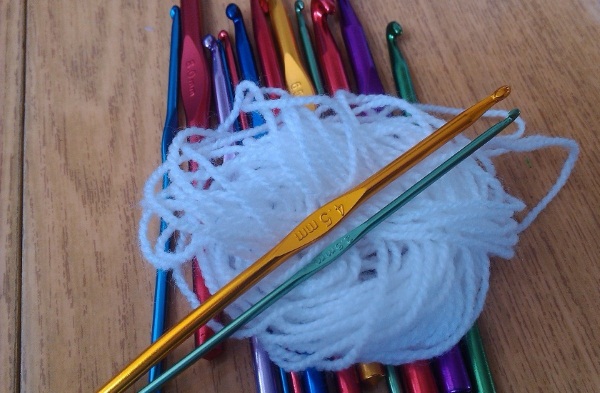
Table Selection of threads and tools:
| Pattern | Knitted item | Threads | Hook size | Price (average) |
| Simple | Napkin Tablecloth | “Lotus” - 250 m, 100 g, 100% mercerized cotton | 1-1.25 mm | 136 rub. |
| “Chamomile” - 320 m, 75 g, 100% mercerized cotton | 1 mm | 99 rub. | ||
| "Violet" - 225 m, 75 g, 100% cotton | 1.5 – 1.75 mm | 66 rub. | ||
| “Yarnart Canaris” 20 g, 203 m 100% mercerized cotton | 2 mm | 56 rub. | ||
| Plaid Curtains | Alize Merino Royal - 100m, 50g, 100% wool | 5 mm | 189 rub. | |
| Alize Lanagold Plus – 140 m, 100 g, 49% wool, 51% acrylic | 4.5 mm | 151 rub. | ||
| Kartopu Elite Wool Prints – 220 m, 100 g, 51% acrylic, 49% wool | 4 mm | 219 rub. | ||
| Tunic | "Dandy Kamtex" 50 g. 330 m, 100% mercerized cotton | 1-2 mm | 82 ru. | |
| Kartopu Bamboo - 230 m, 100g, 50% bamboo, 50% viscose | 3 mm | 129 rub. | ||
| Openwork | Napkin Tablecloth | Sewing threads No. 10 | 0.75-1.0 mm | 40 rub. |
| “Iris” – 150 m, 25 g, 100% mercerized cotton | 0.6 -0.9 mm | 49 rub. | ||
| "White lace" - 475 m, 50 g 100% mercerized cotton | 1.0 mm | 69 rub. | ||
| Tunic | Pekhorka Pearl – 425 m, 100 g, 50% cotton, 50% viscose | 1.5 mm | 123 rub. | |
| Pekhorka Openwork – 280 m, 50 g, 100% mercerized cotton | 2.5 mm | 75 rub. | ||
| Plaid Curtains | Gazzal Rock-n-Roll – 115 m, 50 g, 9% wool, 70% polyamide, 21% polyacrylic | 3 mm | 139 rub. | |
| Net | Napkin Tablecloth Blanket Curtains | Alize Cotton Gold Plus 55% cotton, 45% acrylic, 100g, 200m | 2.5 mm | 151 rub. |
| "Pelican" - 330 m, 50 g, 100% cotton double mercerization | 2 mm | 98 rub. | ||
| Tunic | SOSO – 240 m, 50 g, 100% mercerized cotton | 3 mm | 88 rub. | |
| Pekhorka Uspeshnaya – 220 m, 50 g, 100% mercerized cotton | 3 mm | 84 rub. | ||
| Shells | Napkin Tablecloth Tunic | Yar Nart Tulip – 250 m, 50 g, 100% microfiber | 3.5 mm | 67 rub. |
| Violet" - 282 m, 50 g, 100% mercerized cotton 2.5 mm | 3.5 mm | 103 rub. | ||
| Alize Baby Flower 94% acrylic, 6% polyamide, 100 g, 210 m | 3 mm | 179 rub. | ||
| Curtains Plaid | Gazzal Baby Wool 40% merino wool, 20% cashmere, 40% polyacrylic, 50 g, 100 m | 6 mm | 102 rub. | |
| Gazzal Baby Coton – 105 m, 50 g, 50% cotton, 50% polyacrylic | 5.5 mm | 89 rub. | ||
| Dense | Napkin Tablecloth | Begonia – 169 m, 50 g, 100% mercerized cotton | 4.5 mm | 169 rub. |
| Tunic | Kartopu Coton Mix 85% cotton, 15% polyester, 100 g, 150 m | 4 mm | 75 rub. | |
| Plaid
Curtains | Kartopu Extra Soft 100% polyester 100 g, 160 m | 4.5 mm | 198 rub. | |
| Baby Moon - 100% micropolyester, 100 g, 130 m | 6 mm | 199 rub. | ||
| Kartopu Elegance 100% polyester, 100 g, 180 m | 5 mm | 175 rub. | ||
| Embossed | Napkin Tablecloth Tunic | Alize Softy - 115 m, 50 g, 100% micropolyester | 4 mm | 85 rub. |
| Plaid
Curtains | Lanoso Bambum Class 60% bamboo, 40% cotton, 100 g, 140 m | 5 mm | 180 rub. |
How to make increases and decreases in fabric
The English language has actively entered all spheres of activity, knitting is no exception.
Legend:
- ch – air loop, chain;
- lp(s)– loop(s);
- yo – yarn over
- sc – single crochet;
- sl st – half double crochet;
- dc – double crochet;
- tr – double crochet;
- rep– to repeat.
To decrease or increase loops, you need to choose a hook of the same thickness along the entire length.
- Direct decrease of loops from the first loops. The 1st and subsequent cells are knitted with a half-column, the rest are knitted without change after the 3ch dialed.
- Loop reduction at the end of the row in a straight line. 3ch are cast on and, turning the product in the opposite direction, a column is knitted through 1 cell. Without changes to the end.
- Increase cells at the beginning of the work in a straight line. Depending on the required number of columns, N number ch+4ch is collected. New cells will be created on it.
- Building up empty cells in a straight line at the end of a row. At the end of a row, you need to do 2ch, 3yo, insert the hook into the side of the product, pull out the thread, the resulting loops, knit 2 by 2. This principle allows you to create the required number of cells.
- Direct addition of filled cells at the end of the row. Having knitted the last column, you should make 2yo and, having inserted the tool into the side part of the fabric, pull out the thread. Having knitted 2 loops, you will get 1 column. Pull the thread above the base - 2 columns.
- Cut decrease of occupied cells at beginning of line. After 4ch, 1yo and pull yarn through second loop, knit 3 hdc.
- Cut reduction of occupied cells at the end of the line. The last cell should be replaced with 3 hdc, then 1 hdc with 2 yo.
- Normal decrease of empty cells at the beginning of the row. After making 4ch, knit 1dc into the second or third dc of the previous row.
- Cut decrease of hollow cells at the end of the row. It is necessary to replace the last column with tr.
- Split cell build up with columns at the beginning. After dialing 4сh, perform 3 dc in the 1st column of the previous column.
- Adding occupied squares at the end of the row is truncated. It is necessary to knit 3 dc in the final column at the end of the row, after tr.
- Beveled increase of cells without columns at the beginning of the row. You need to knit 1 dc in the first column of the previous row, having previously cast on 6 ch.
- Truncated increase loops of hollow cells on the edge. After 2 ch at the end of the row, make tr in the last column.
Simple patterns
Filet crochet (diagrams and description are presented below) has a schematic image:
Unpainted cell – 2dc joined 2ch;
shaded – 3dc.
"Rhombus"
For this pattern you need to cast on 36ch.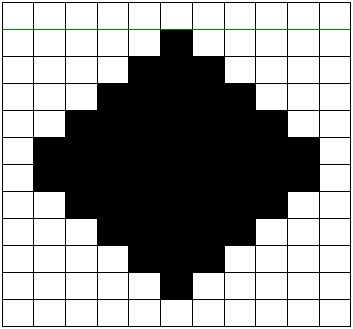
1 R:
- dc in 6ch – cell;
- 1ch;
- sk lp;
- dc to next lp;
- knit 11 cells.
2 R:
- 4ch;
- sk lp;
- dc in the next lp;
- 1ch;
- must be completed before the black cell and after the black cell.
3-10 R – follow the description above.
Filet crochet (diagrams and description are clear for beginners) in the form of intersecting squares: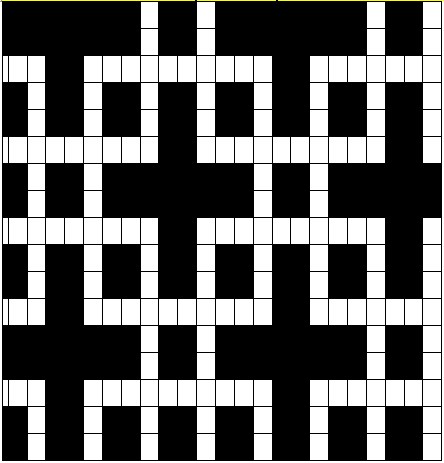
Dial 72ch +3ch.
1 R:
- 2ch; 7dc in 8lp from hook;
- rep to the end of the row.
2 R:
- 3ch; 6dc; 2ch; 7dc; 2ch;
- so to the point.
3 R:
- 5ch; 1dc; 2ch;
- sk 2dc up to X6;
- 6 dc;
- rep up to X19;
- 6dc;
- to the finish line.
4 R:
- 3ch; 24dc; 2ch; 7dc; 2ch; dc;
- rep.
5 R:
- 5ch; 7dc; 2ch; 25dc;
- rep.
6 R:
- 5ch; dc; 2ch; dc; 2ch;7dc;
- 2ch and 1dc, copy 6 times;
- rep.
7 R:
- 3ch; 6dc; 2ch; 7dc; 2ch;
- from 8 to*;
- so on until the end of the line.
8 R:
- 2ch; 7dc, starting from 8th lp from hook;
- rep.
9 R:
- 5ch; dc and 2ch rep 9 times;
- finish the same way.
10 R:
- 3ch; 6dc; 2ch; 7dc; 2ch; 7dc;
- complete to the point.
11 R:
- 3ch; 18dc; 2ch; 7dc; 2ch; 7dc;
- rep.
12 R:
- 3ch; dc and 2ch rep 8 times; 7dc; 2ch; dc.
The patterns shown are basic and serve to create other unique motifs.
"Squares and diamonds"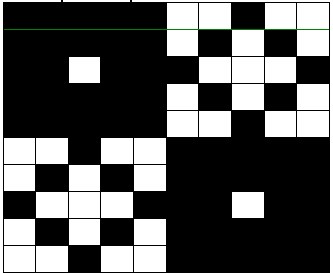
To complete this pattern you need 72ch +3ch.
"Wave"
For this pattern 76ch +3ch.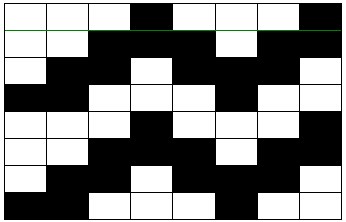
Simple patterns include images of geometric shapes, fruits, vegetables, and natural phenomena.
Openwork patterns
Openwork differs from simple ones in that the pattern has more white cells (unfilled) and air loops connecting different figures, which gives the product a light and transparent look. Openwork patterns can be divided into simple and complex in execution.
For knitting openwork and relief patterns, new symbols are added to the basic dc and ch.


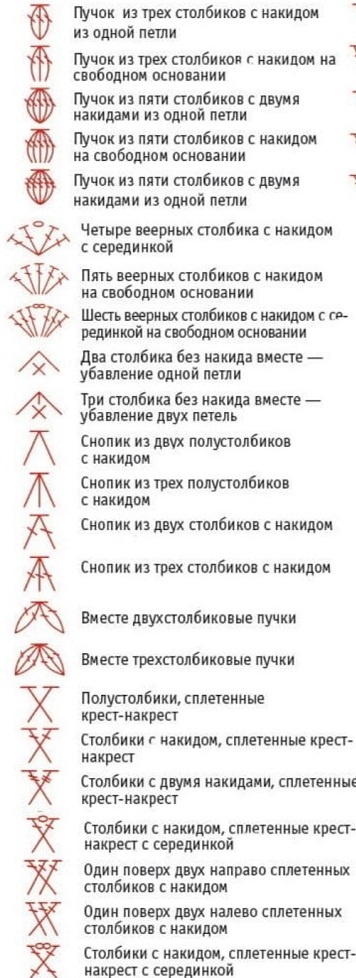
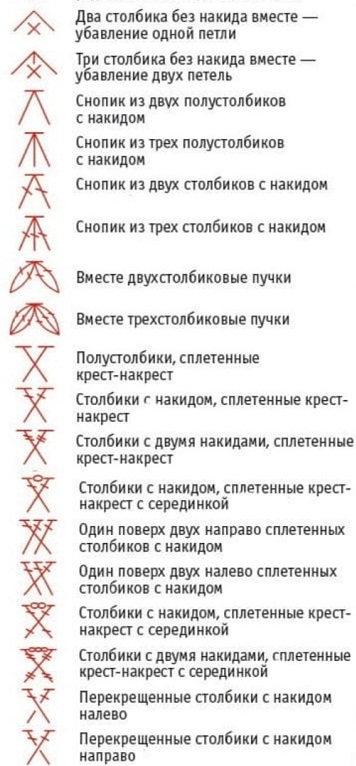
Filet crochet (diagrams and description include several repeating rows) for beginners offers simple openwork patterns.
"Rhombuses"
Cast on 27ch + 3ch.
1 R:
- 2ch and dc in 3rd lp;
- four times;
- 2ch and 3dc in 3rd lp after last dc;
- 2ch and dc in 3rd lp - rep 4 times.
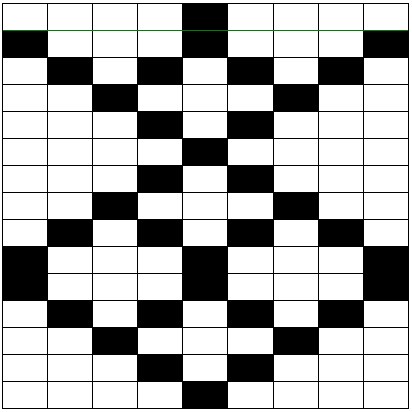
2 R:
- 2ch and dc in 3rd lp;
- duplicate three times;
- 2ch and 3dc in 3rd lp;
- 6ch and 3dc in 5th lp;
- 2ch and dc into 3rd lp – copy 3 times.
3 R:
- 2ch and dc in 3rd lp;
- rep 2 times;
- 2ch and 3dc in 3rd lp;
- 6ch and dc before the beginning of the ch of the previous line;
- 6ch and dc at the end of ch of the previous row;
- 6ch and 3dc in 1 cell in order;
- 2ch and dc into 3rd lp - rep twice.
4 R:
- 2ch and dc create in 3rd lp;
- 2ch and 3dc in 3rd lp – four times;
- 2ch and dc in 3rd.
5 R:
- 2ch and 3dc from 3rd lp;
- 6ch and dc before beginning ch of previous row;
- 6ch and dc at the end of the ch of the previous knitted line;
- 6ch and 3dc in 1 cell in order;
- 2ch and 3dc in the 3rd lp from the instrument;
- 6ch and dc before beginning ch of row below;
- 6ch and dc at the end of ch of the previous strip;
- 6ch and 3dc in 1 cell, going by the count;
- 2ch and 3dc knit from the 3rd lp to the left of the hook.
1-5 R repeat.
"Flower"
Dial 90ch +3ch.
1 R:
- 2ch and dc in each 3lp;
- complete to finish + 2
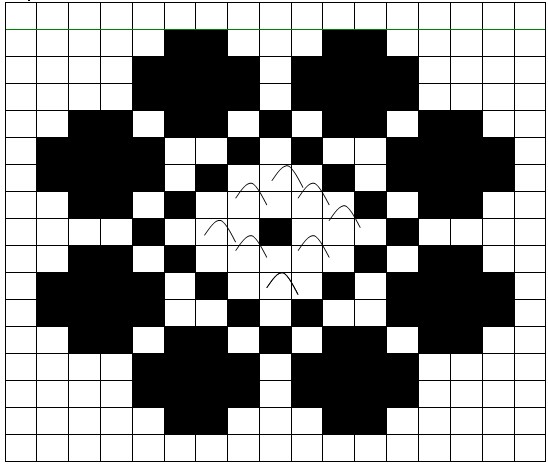
2-3 R:
- 2ch and dc in dc of the row passed;
- five times;
- 2ch;
- 3dc in the middle dc of the previous knitted row;
- knit 5 stitches;
- 3ch;
- 3dc in the middle of dc of the previous row;
- knit 5 cells in the same way;
- 2ch and dc into dc of row below;
- copy 5 times;
- complete to completion + 2
4 R:
- 2ch and dc in middle dc of previous row;
- do it three times;
- 2ch;
- 3dc in the middle of dc of the previous row;
- knit 2 links in this way;
- 3ch;
- dc in 4 dc row below;
- knit 7dc;
- 2ch and 4dc on ch passed strip;
- completed + 2
5 R:
- 2ch and dc into dc of previous row;
- recreate twice;
- 2ch;
- 3dc in the dc cell of the previous knitted one;
- 9dc respectively in each dc of the previous row;
- 3dc in cell 5 of row;
- 2ch and dc, 2ch and dc;
- 2ch and 3dc in a cell;
- 6ch and 3dc;
- 2ch and dc, 2ch and dc;
- 3dc in a cage;
- 9dc respectively in each dc of the previous line;
- 3dc in cell;
- 2ch and dc into dc of knitted line below, 2ch –2 times;
- further without changes.
6 R:
- 2ch and dc in each dc of previous row;
- rep three times;
- 6dc in dc of second row;
- 2ch and 3dc in a cell;
- 6 ch and 2dc in 3 lp;
- 2ch and 3dc in a cage;
- 6dc in dc of 6th row;
- 2ch and dc in each dc of connected line below;
7 R:
- 2ch and dc in all dc of the knitted row;
- copy five times;
- 2ch and 3dc in a square;
- 6ch;
- Dc before cell on ch;
- 2nd dc in center of cell on ch;
- 3rd dc after link on ch;
- 6ch;
- 3dc in the next cell;
- 2ch;
- 5dc in each dc of previous row;
Repeat from 1-7 R.
"Spiders"
Dial 21ch +3ch.
1 R:
- 7ch to 7ch;
- in each ch by dc – total 10dc;
- 7ch through 7lp after last dc;
- 3ch completes the row.
2 R:
- 3ch, hook inserted into 4ch;
- 3ch to dc of first line;
- dc in each dc on the previous strip - 4 in total;
- 2ch through 2 dc of the third line in 6d;
- dc in each dc of the knitted row – 4dc;
- 3ch you need to insert the hook into 4ch;
- 3ch to last dc of previous row;
- until the end +
3 R – knitted as 1P;
4 R - as 2P.
Easy to make openwork patterns are offered below:
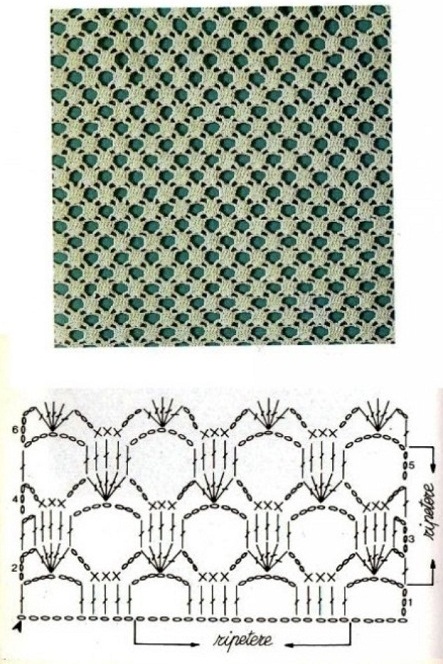
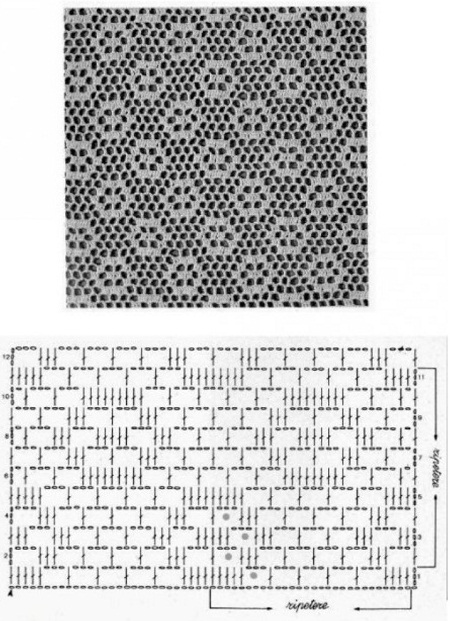
Net
Types of mesh:
- Fishing tackle.
dc and sl st are attached directly above the dc or sl st of the previous row.
- French mesh.
dc or sl st is attached under the arch of the ch connected row, the cells are obtained in a checkerboard pattern.
- Elegant mesh.
- 3ch;
- 2(3) dc or 2(3) sl st are attached under the ch arch of the knitted row every 3 lp(s).
Products using these nets look beautiful, but it is also possible to add patterns to them, which gives the item uniqueness.
Shells
There are 3 ways to crochet shells.
Simple "shells":
- number of ch multiples of 4 +1. (12+1, 16+1, 24+1);
- 4dc in one ch in the middle in the same loop is one “shell”;
- 2nd, the same as the 1st “shell”, inserting the hook into the 4th loop of the main fabric;
- at the end of the row 3ch;
- each “shell” of the 2nd and subsequent rows must be knitted in the middle of the “shells” of the previous row.
Complex "shells":
- number of ch divisible by 6 + ch;
- you need to knit sl st into the second ch;
- skip 2ch and work 5dc in third ch – 1 shell;
- Don't knit 2 loops, sl st in 3rd ch and 5dc again;
- at the end of the row 3ch;
- 2nd row – skip 2 dc of the previous row;
- sl st over next dc linked below line;
- skip 2dc;
- crochet 5dc in next sl st of 8th row.
"Crazy Shells":
- number of ch divisible by 3 + ch;
- ignore 3 loops and knit 3dc in the 4th;
- skip 3ch and sl st in previous column;
- 3ch, 3dc in the same loop where sl st;
- pass 3ch and sl st – first “shell”;
- to end sl st, then 3ch;
- from the first lp – 3dc in sl st of the sixth row;
- sl st under 3ch (arch);
- and then continue in the same manner.
"Shells" can be placed horizontally, vertically, in a checkerboard pattern. Shells in filet knitting can be openwork and dense.
Dense patterns
Using dense patterns, it is possible to depict flora and fauna, people, and ornaments on the grid.
Filet crochet can be both openwork and dense. Scheme and description of "Kazakh ornament".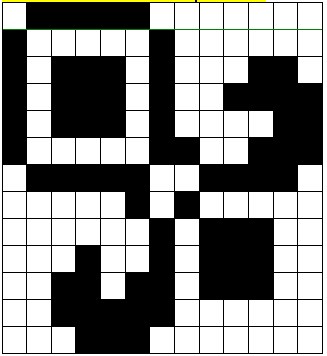
Dial 41ch +3ch.
1 R:
- dc every 2ch – 14dc;
- in 42ch you need to do 3dc;
- in 43ch-3dc;
- in 44ch you need to do 3dc;
- dc alternates with 2ch – 6dc;
- until the end +
2 R:
- dc to dc – 12dc;
- then dc needs to be knitted 3dc – 5 times;
- to the end of dc in all dc;
- at the end of the row 3ch.
3 R:
- dc under each overlap dc of the connected strip – 6dc;
- in the next dc you need to knit 3dc – three times;
- dc in all dc arches of the previous row – 2dc;
- in the next dc 3dc – 5 times;
- knit dc in every dc of the fourth row to the end;
- ultimately 3ch.
4 R:
- dc under each dc arc of the previous line – 6dc;
- in the upcoming dc 3dc – three times;
- dc under the jumper dc of the previous row – 2dc;
- in the next dc 3dc – twice;
- dc in dc of the previous line – 6dc;
- in the order dc 3dc – so 2 times;
- to the end of dc in all dc of the knitted row;
- 3ch completes the row.
5 R:
- dc under all dc arches of the previous row – 6dc;
- in the next dc 3dc – three times;
- dc in all dc notches of the second strip – 2dc;
- in the next dc 3dc – do this 2 times;
- to the end of dc in each dc of the previous row;
- finishing on this line 3ch.
6 R:
- dc in dc of the previous line – 10dc;
- in the next dc 3dc – do this 2 times;
- dc in dc of the previous row – 2dc;
- in the upcoming dc, perform 3dc - twice;
- to the end of dc in all dc of the connected row;
- in conclusion 3ch.
7 R:
- dc in all dc notches of the previous row – 2dc;
- in the next dc 3dc – this happens 4 times;
- dc in each arch dc of the second strip – 4dc;
- in the next dc 3dc – five times;
- dc in all dc holes of the previous track – 2dc;
- at the end of the row 3ch.
8 R:
- in the below linked dc 3dc – three times;
- dc in all subsequent dc arches of the previous row – 4dc;
- in the upcoming dc 3dc – 2 times;
- dc in all dc notches of the underlying line – 10dc;
- in the next dc 3dc – once;
- the point is 3ch.
9 R:
- in the previous dc 3dc – twice;
- dc throughout the entire line dc– 8dc;
- in the order dc 3dc – once;
- dc in each dc arch of the previous row – 2dc;
- further dc 3dc – 3 times;
- dc in dc of the previous strip – 2dc;
- in the next dc 3dc – once;
- at the end of 3ch.
10 R:
- in the previous dc 3dc – 4 times;
- dc throughout the entire dc– 4dc band;
- in the upcoming dc 3dc - so 1 time;
- dc in each dc arch of the third row – 2dc;
- in the next dc 3dc – three times;
- dc in all dc of the previous line – 2dc;
- in the order dc 3dc – once;
- final stage 3ch.
11 R:
- 2dc in each dc of the row below;
- in the next dc 3dc – 3 times;
- dc throughout the row dc – 6dc;
- in the upcoming dc 3dc - once;
- 2dc into the next dc of the previous row;
- in dc 3dc – three times;
- dc under each arch dc of the sixth line – 2dc;
- further dc 3dc - 1 time;
- the end of the line will be 3ch.
12 R:
- dc in dc of previous row – 12dc;
- in the next dc 3dc – once;
- dc in all dc holes of the strip connected below – 10dc;
- then dc 3dc – like this 1 time;
- at the end 3ch
13 R:
- dc in all loops of the previous row – 14dc;
- in the next dc 3dc – by quantity 4;
- dc in each dc arch of the previous row – 2dc;
- at the end of 3ch
Every needlewoman will be able to read and create patterns transferred onto squared paper.
"Violet"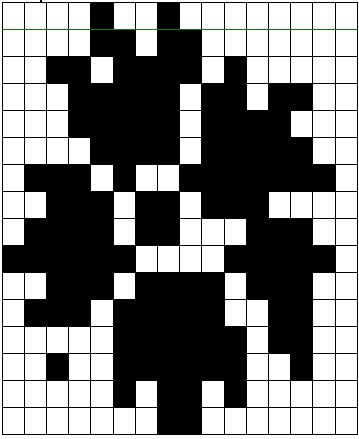
Relief patterns
Relief patterns are obtained by combining convex and concave sections on the fillet mesh. Using the symbols for knitting fillet mesh and relief patterns, original motifs are obtained.


Pattern of filet crocheting of a napkin
Filet crochet (diagrams and descriptions of products are presented below) is used to create napkins.
To avoid making a mistake in the calculation, it is necessary to make markings on the diagram, skipping 10 cells.
The edges of the product can be decorated with a border, for which a diagram can be given either separately or together with the main diagram.
Napkin "Rose"
To make this napkin you need 46ch, there are 39 rows in this product. You need to knit from the bottom up.  Here you need to add and subtract cells.
Here you need to add and subtract cells.
Tablecloth Swans
Cast on 234ch, on which knit 78dc, each dc is knitted on 3ch. Size 85X35. 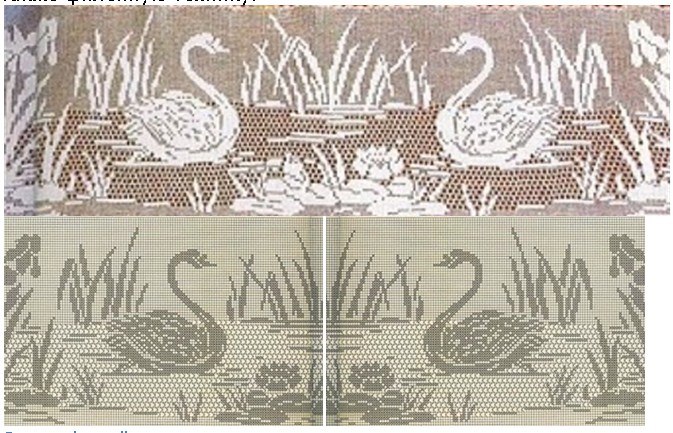 The tablecloth can be tied with a border using the fillet technique.
The tablecloth can be tied with a border using the fillet technique.
Pattern of filet knitting of a tunic
To ensure that the finished product is the right size, you need to knit a sample of 10 cells wide and 10 high, then wet it, iron it and count the number of loops.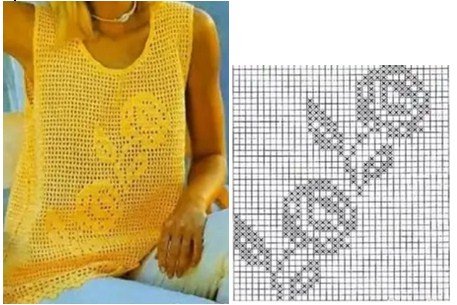
This pattern is placed on 30 cells of the filet grid. To perform this simple model, you can take a thread according to the table suggested above.
Pattern of filet knitting of a blanket
The size of the product is 220X170. You can choose any threads for this model. 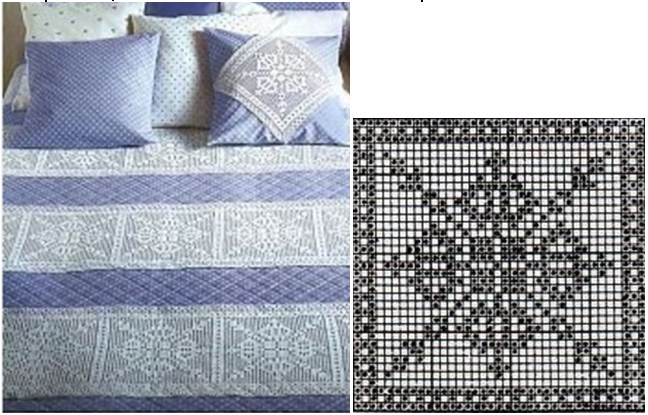 The blanket must be knitted in separate square pieces, and then connected together.
The blanket must be knitted in separate square pieces, and then connected together.
Pattern of filet knitting of curtains
The size of the proposed curtain is 66x39 cm

To decorate interiors and clothing, many people combine fabric with fillet motifs.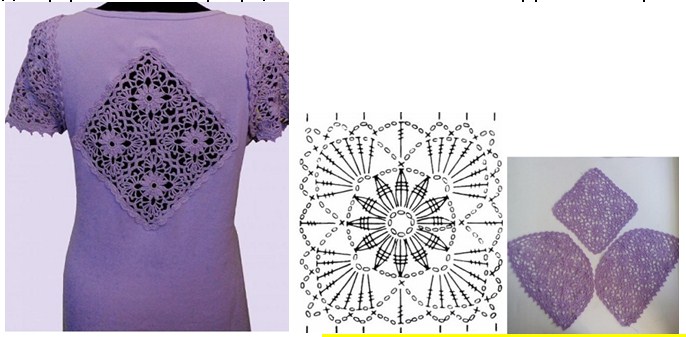
The patterns offered in this article with a description of filet crochet will always remain relevant for any needlewoman who loves and appreciates beauty.
Author: Irina Nikolaeva
Article formatting: Vladimir the Great
Video about filet crochet
Basics of filet crochet:
